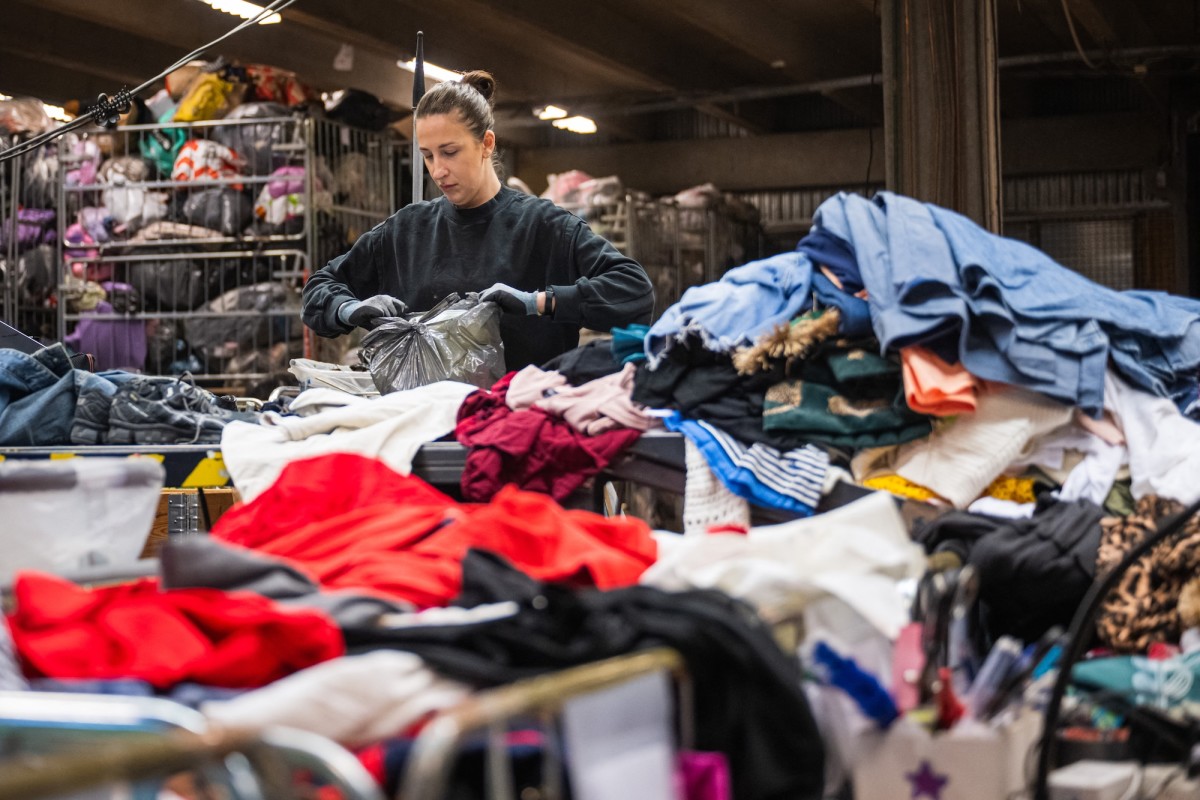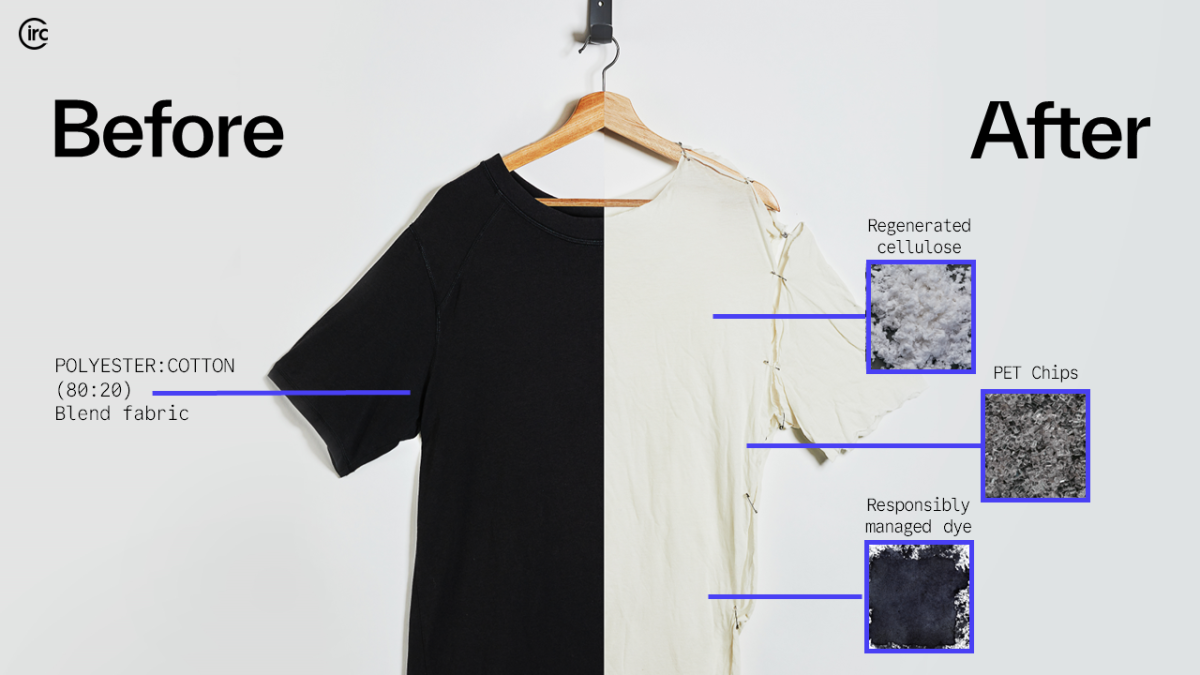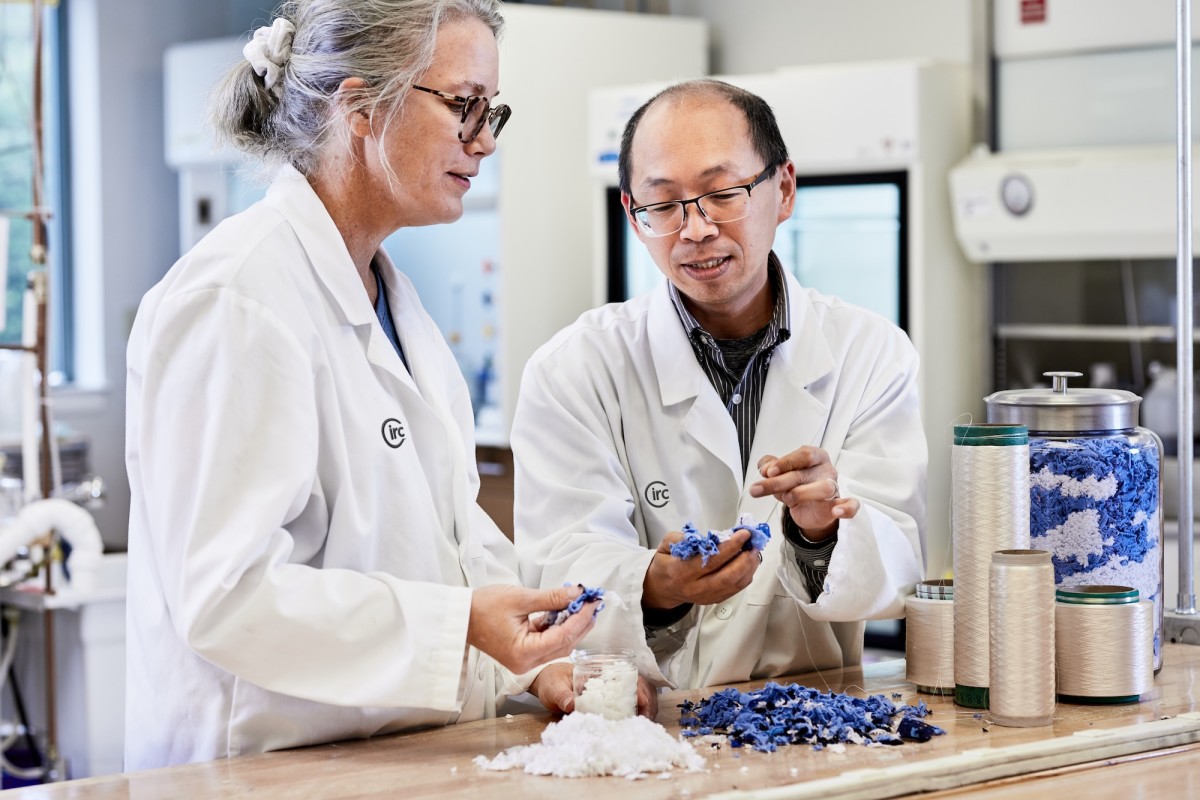Is Textile-to-Textile Recycling Nearing Mainstream Adoption in Fashion? – Latest Fashion Trends & Style Tips July 09, 2025 at 06:15PM
📰 Is Textile-to-Textile Recycling Nearing Mainstream Adoption in Fashion?
✨ Fashion Insights & Trends:
Each year, the global fashion industry generates more than 200 billion pounds of textile waste, with fast fashion alone contributing to around 10% of global carbon emissions. Overproduction to satisfy overconsumption is largely to blame, and it shows no signs of slowing — global fashion consumption is projected to rise 63% by 2030.
For decades, brands have dealt with raw material waste and overstock in various unsavory ways. Luxury brands aiming to maintain exclusivity have come under fire for literally burning excess inventory, while mid-level ones and fast-fashion retailers might donate unwanted inventory — the latter a temporary pause in the item's eventual journey to landfills or waste piles in countries like Ghana. But in recent years, we've seen increased momentum for more responsible and efficient textile recycling efforts — including new legislation.
Most notably, the EU's Ecodesign for Sustainable Products Regulation (ESPR) will improve the circularity, energy performance, recyclability and durability of products by 2030 through the adoption of measures, including: digital Product Passport requirements, bans on the destruction of unsold textiles and footwear and Green Public Procurement rules that require public authorities to prioritize the purchase of goods and services with reduced environmental impact. Brands that sell into the EU from outside regions will also have to follow these mandates.
In California, meanwhile, Extended Producer Responsibility (EPR) legislation is paving the way for the U.S. amidst federal-level pushback on environmental regulations. Within the EPR, the Responsible Textile Recovery Act fosters accountability toward collecting, repairing, reusing and recycling materials. Brands must apply to a Producer Responsibility Organization, which regulates these actions, by July 1, 2026 ahead of formal CalRecycle regulations in July of 2028.

Photo: Jonathan Nackstrand/AFP via Getty Images
As fashion waste mounts and regulations loom, industry insiders are displaying cautious optimism around textile-to-textile recycling after major setbacks (such as H&M-backed Renwcell's bankruptcy). There's been in uptick in fashion corporations introducing new recycling efforts, with Chanel recently making headlines for announcing its launch of an in-house component-level recycling program called Nevold (short for "Never Old").
Elsewhere, brands and retailers are collaborating with innovative textile companies to meet their circularity goals. Last year, thrift chain Goodwill and materials regeneration company Reju partnered with Waste Management to foster a collaborative model for regional textile collection, sorting, reuse and recycling that is intended to divert more non-wearable textile materials from the waste stream. This year, Gap Inc. announced a fiber-to-fiber recycling partnership with Swedish innovator Syre; Mango invested in and released its first post-consumer recycled fiber teen line with startup The Post Fiber; and Renewcell, now rebranded as Circulose, has once again signed a multi-year deal with H&M.
Related: The Most Exciting Advancements in Fabric Innovation Right Now
Fashion's final sustainability frontier
Promising partnerships aside, industry readiness for textile-to-textile recycling remains behind that of more widely adopted circular initiatives, like resale or repair, which were part of the fashion ecosystem long before terms like "circularity." Brands, and even the companies powering textile recycling, are hesitant to discuss their efforts, lest they fall short. And although EU regulations will require brands to incorporate recycled textiles into their everyday manufacturing by 2030, many established players believe delaying circularity will protect their bottom line.
Still, a few household-name brands are challenging norms in favor of circularity. Those that manage to crack the code on scaling recycling will be far better positioned to navigate long-term resource scarcity and regulatory change. It won't necessarily be easy, though.

Photo: Courtesy of Circ
"When we're talking about textiles-to-textile recycling," says Rachel Kibbe, founder and CEO of the American Circular Textiles (ACT) coalition, "we're talking about fundamentally changing the way we manufacture goods."
The process begins with sourcing "feedstock," or unwanted textiles, before moving into sorting and prepping. Although promising new technologies like near-infrared light scanning are helping streamline the process, it remains largely a tedious, manual task. The majority of recycling facilities today process one or a few specific material types; and before processing can even begin, non-textile components such as zippers and buttons, and treatments like dyes and waxes, must often be removed.
Historically, unused materials have undergone mechanical recycling that begets lower-quality materials with shorter fibers. Today, chemical recycling processes show the most promise, yielding truly circular materials that can (in theory) be endlessly recycled. Given that most clothing today is made from a blend of organic and synthetic fibers — with polyester accounting for more than half of global production in 2022 — it's no surprise that many innovative programs focus on perfecting the recycling process for polyester or poly blends, often using proprietary solutions featuring chemical solvents and catalysts to deconstruct materials. Cotton is another key area of focus.
Related: Inside the North Carolina Facility Making Clothing Fabric Out of Recycled Plastic Bottles
Justifying the Cost

Photo: Courtesy of Zara
Danville, Virginia based chemical recycling start-up Circ is generating excitement across the fashion industry with its novel approach to processing blended textiles — polycotton in particular. The company has secured contracts with several brands, including Zara parent company Inditex, reflecting growing interest in its technology.
"We currently are the only company that has demonstrated the ability to recycle both fractions [of polyester and cotton] back into the supply chain," explains Luke Henning, Circ's chief business officer. Circ breaks down and returns polyester to its building blocks — eliminating the need for oils like petroleum that fuel the making of virgin polyester — then recovers cellulose from the cotton. The cellulose can then be used to make fibers like viscose, rayon and lyocell. "Most people don't realize that your clothes are effectively made of three things: oil, cotton and trees," Henning continues. "We help people use less oil and we help people use less trees." Circ's internal analysis has shown its products are "substantially better" than virgin materials across a range of metrics, including greenhouse gas emissions.
Despite advancing technology like Circ's, many brands are still hesitant to commit fully to recycled materials, typically due to logistical concerns and, of course, financial ones. If recyclers hope to convince brands to effectively reroute their supply chains, a basic understanding of fashion economics will be paramount to separating the winners from the losers. Right now, ACT's Kibbe does not believe that the United States is prepared for wide-scale adoption. Circ's recent investment a $500 million plant in Saint-Avold, France — where the company can benefit from the more built-out ESPR regulations — supports that view.

Photo: Courtesy of Circ
"If everything had to be recycled today, we would not have the feedstock," she warns, citing the U.S.'s lack of formalized EPR legislation and confusion in getting supplies from consumer's closets to recycling plants. But demand is an issue as well. "I think both brands and service providers are frustrated. It's a chicken or the egg [situation]," she expands. "Service providers are saying they are ready. 'We can break ground or we can scale if you would just put in the purchase orders.' And brands are saying, 'well, we don't know what regulation is going to look like. And it's still a little bit more expensive.'"
The complex methods behind textile-to-textile recycling come through in the cost that brands pay for reprocessed fibers. Experts estimate that recycled textile materials are around 1.2-to-1.3 times more expensive than virgin fibers. Customers have shown time and again that they are unwilling to pay a premium for sustainability, leaving the cost of circular operations with brands.
"A lot of brands are making very good money with the status quo," Henning says. "So for them to support new regulation, it's somewhat against their current self-interest and their short-term profit motives." Recent regulatory filings under the EU's new Corporate Sustainability Reporting Directive (CSRD) suggest that fashion's most influential brands still do not consider climate change as a near-term financial risk. To ensure their investments pay off, early actors will need to get creative in how they incorporate and market recycled materials to customers — something Coach parent company Tapestry understands well.
Case Study: Coach

Photo: Courtesy of Coach
Coach launched its (Re)Loved platform — a way to shop pre-owned bags or trade in used items to be recycled or repaired — in 2021. Last year, the company took back more than 6,100 units through Coach's exchange program and repaired over 91,000 units globally. Coach (Re)Loved was ultimately the catalyst for the launch of Coachtopia, a sub-brand focused on upcycled products, keeping materials out of landfill and designing with circularity in mind.
"We weren't chasing perfection, but we knew we knew what we wanted to do," Logan Duran, VP of Sustainability and ESG at Tapestry says of the thought process behind Coachtopia. The brand was intentionally launched as a standalone sub-brand with its own profit and loss statement, enabling Tapestry to test and learn and place progress over perfection.
Coach and Tapestry set out to find novel solutions for the environmental impacts associated with the brand's highest-volume material, leather. They decided to partner with Gen Phoenix, a UK-based company that translates leather waste into new materials. During the wet blue tanning process, up to two-thirds of a hide can end up in a landfill. Gen Phoenix uses a process called hydroentanglement to break down and subsequently re-enmesh the fibers of leather scraps so they can be used in products like bags or airplane seats. (The company has worked with a number of industry-spanning brands in addition to Tapestry, including Dr. Martens and Jaguar.)
Along the way, Gen Phoenix and Tapestry found benefits to using the degenerative leather outside of sustainability alone. The lightweight materials are well-suited for printing and embroidery, and the roll format makes them easier to work with than traditional hides. An uncoated version of Gen Phoenix's product that feels like suede is used as a lining across the Coachtopia catalog.
Of course, both companies have to take more traditional business and consumer priorities into account as well. "Gen Phoenix had to enter the market winning on the elements of price and performance in order to have the sort of environmental impact that it has had," says Elyse Winer, Chief Marketing Officer at Gen Phoenix. Coachtopia prices reflect this philosophy. A traditional Coach bag typically costs between $295 and $500, while Coachtopia bags start at $150 and don't exceed $295.
Next steps: scaling circularity

Photo: Courtesy of Circ
Brands are gaining access to more recycled textile options. According to Henning, technologies like Circ's could reduce the cost of recycled materials to a point where they can strongly compete with virgin materials — that is, if they're adopted at scale. Tapestry has begun expanding its efforts by bringing repurposed denim from Coachtopia into Coach's main line as well.
As the fashion industry navigates textile-to-textile recycling, education will be critical at every stage. Regulators need to establish clear, actionable guidelines for brands. At the same time, brands should help shape how circularity-driven fines are used — guiding regulators to invest in the infrastructure, processes and workforce needed to support a circular economy. One way to approach this, according to Kibbe, is to treat regulation more like a business plan than a legislative burden.
"The details are in the financing," she says. "It has to be a thoughtful process with stakeholders who know how to build infrastructure and reverse logistics and fundamentally understand the economy of the reverse supply chain of textiles, and that's a big undertaking."
Finally, brands need to be transparent and fair with consumers in their labeling and pricing. "There's something kind of romantic in the storytelling around how a product gets made," Winer suggests, "and I think there's a real desire and interest from consumers to understand, 'How many lives did this material live before it reached me?'" The future of textile-to-textile fashion will be determined by bold visionaries, according to Henning, but it will also be decided by the consumers who choose whether or not they care about it.
📌 Love fashion? Follow us for daily updates on our fashion blog! 🌟
🔹 #FashionTrends #StyleTips #OOTD #Is Textile-to-Textile Recycling Nearing Mainstream Adoption in Fashion?
Comments
Post a Comment